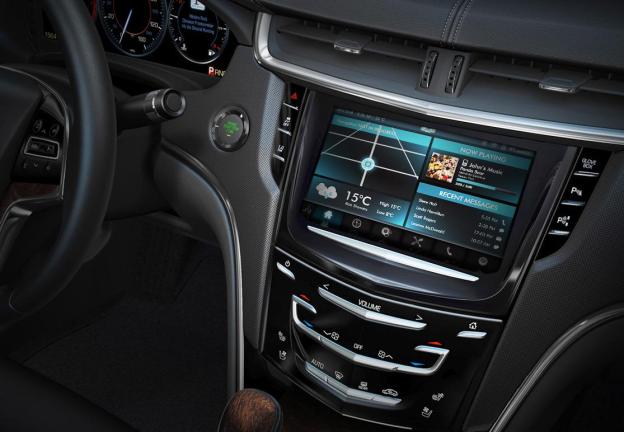
I attended the annual BlackBerry conference this week, and had a nice chat with the folks that make their QNX operating system. In case you don’t remember, BlackBerry acquired QNX back in 2010 and went on to use the software in its ill-fated PlayBook tablet, and new phones. Interestingly enough, it also ended up in cars.
Over the last few years, QNX has been slowly displacing Windows CE to become the dominant platform in connected cars. There are a number of reasons for this shift, but the biggest seems to be that car makers apparently don’t want to run Windows 8 embedded in their cars. This promises an interesting future, because the QNX developers understand that the future is highly mobile, and that bringing the desktop experience to a mobile platform is pretty much a non-starter. BlackBerry is also making some strong progress with its phones, and since QNX is a distributed OS (anybody can license it from BlackBerry), this could lead to a very different in-car-entertainment experience in future automobiles.
It’s all about integration
The future of integration is a near seamless connection between your smartphone and your car. It’s being able run applications off your phone on your car screen, streaming music using your phone’s 4G connection and playing it on your car stereo, and even controlling your phone with your car. You can glimpse it today in products like Aha Radio, but only in the few cars and after-market systems that support it, like Subaru’s BRZ. You can configure your phone to feed your car HD audio, and once you start the car, you easily move from listening to music on your phone’s speaker or headset to listening to the same track in your car with all controls active (like steering wheel volume, skip, etc.).
Today, you can have brand-new cars on the lot with entertainment systems that are over seven years old.
You’ll even be able to see what the car is doing if you aren’t driving it. For instance, imagine a future car alerting you that your child is driving in excess of the speed limit, or otherwise driving unsafely. Granted, you’ll be less excited if your spouse or insurance company gets this information about you, but the capability will be available regardless.
Always connected
Today, you need to drive to a dealership to update your car’s firmware, or to find out why the check engine light is on. An always-connected car will get software updates automatically, and you’ll know in real time when you have a significant problem under the hood. (Granted, I think the updates will come in at night while the car is parked, because none of us want that “shutting down in 10 minutes” experience while we are rushing to work in the morning.)
Connected cars will balance in-home Wi-Fi connections with on-the-road cell connections to pull in both current information (updated traffic, critical problems) and off-line updates. For instance, you might set the car up to download the latest shows for your kids at night, because streaming video while driving would likely max out your data plan.

This “always connected” experience could also translate to automatic alerts to 911, AAA or some other service if you have an accident, flat tire, or breakdown. By the time you pull over, the service could already be dispatched to your exact location, shortening your wait time significantly.
Your on-dash camera could capture interesting events as you drive and then dump those videos, along with virtual images of your gauges, to the cloud via Wi-Fi. You may want to turn off the microphone if you are particularly expressive when someone cuts your off, though, to avoid becoming an unexpected YouTube star.
More up-to-date and current
Unlike today’s cars, future connected cars should have the potential for a more modular approach to tech. This would allow dealers to keep new cars updated before they are sold, and for buyers to enjoy systems that are more current, at least for the three to five years they are likely to keep the new car. Today, you can have brand-new cars on the lot with entertainment systems that are over seven years old. A significant upgrade may have occurred during that model’s run, but the cars may have been manufactured up to 18 months earlier, and the hardware that goes in at assembly is likely much older than that. Nobody wants an out-of-date entertainment system, and used cars would also be more valuable if they could be easily updated.
Is Blackberry QNX the magic bullet?
Microsoft is having a tough time with operating systems this decade. It lost mobile to Android and iOS, and now appears to be losing automotive entertainment systems to BlackBerry. Both losses are connected to a Microsoft strategy that was too tied to the old desktop PC platform, and the fact that there are very few who want a desktop experience in their cars.
While these automotive solutions will work with a variety of phones, they should work best with BlackBerrys, which are also using the QNX OS, providing that company with an interesting strategic advantage. Within two years, I expect we’ll see the full strength of that advantage begin to emerge, and the end result will be a vastly improved user experience for car owners who also own BlackBerrys. It’s going to be a long two years, but I think I can now see a light at the end of the tunnel, and I’m pretty sure it isn’t a train this time.


